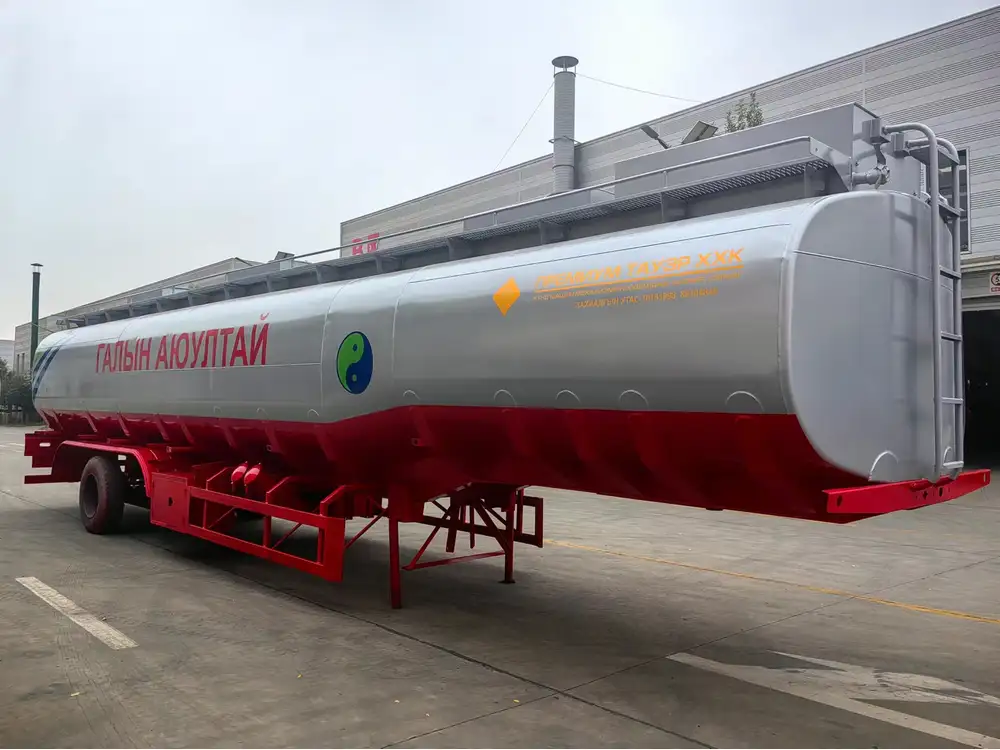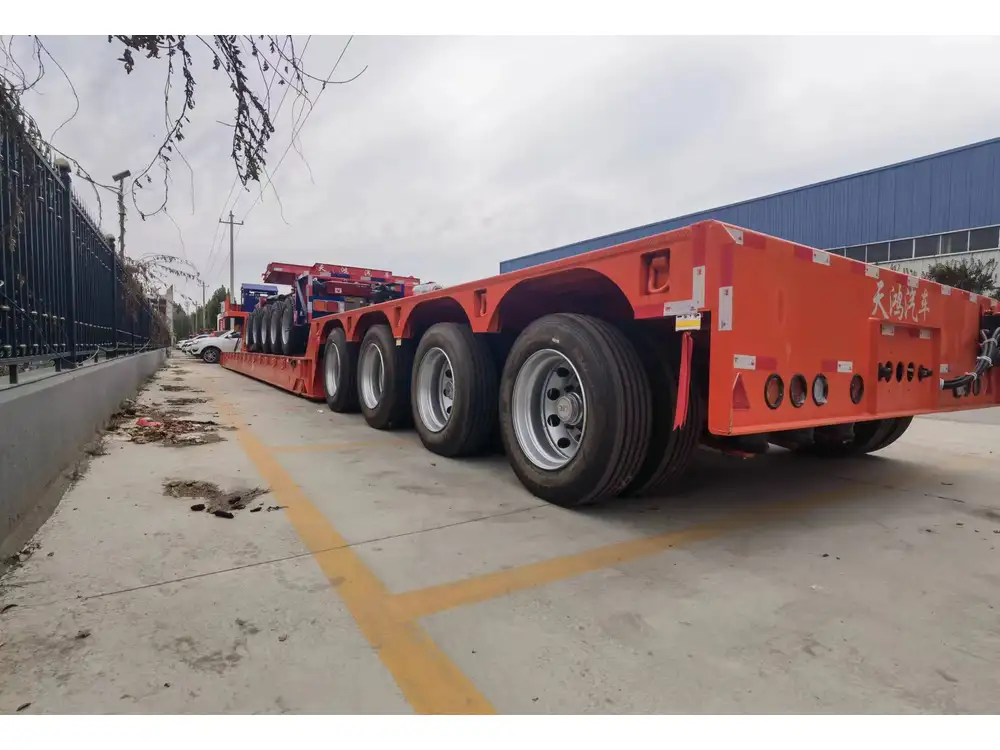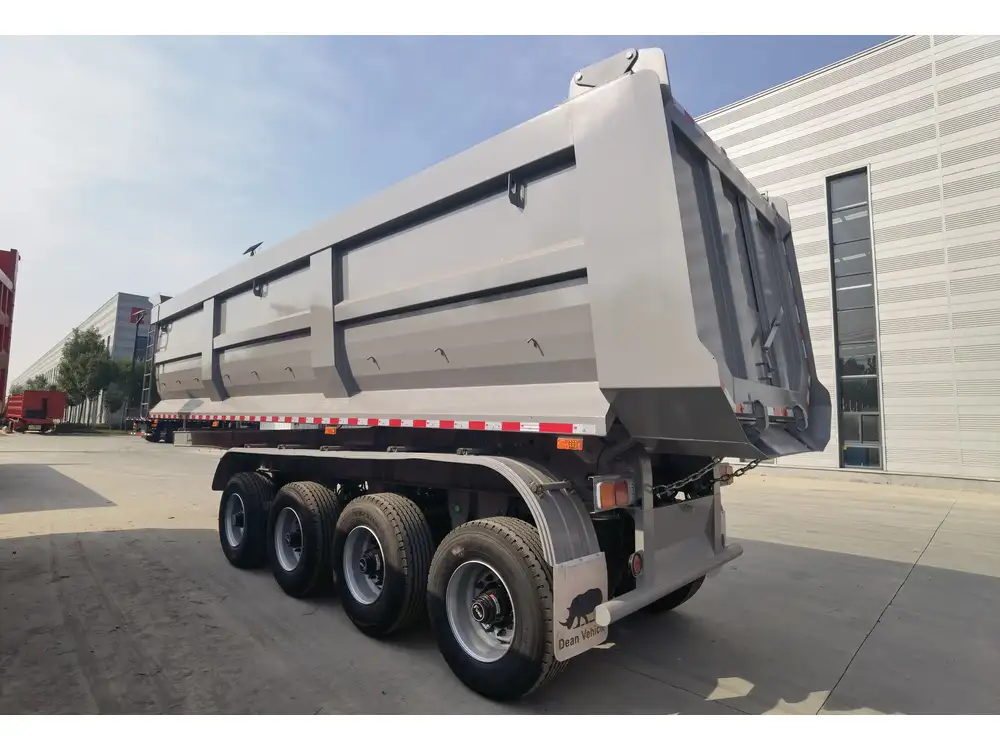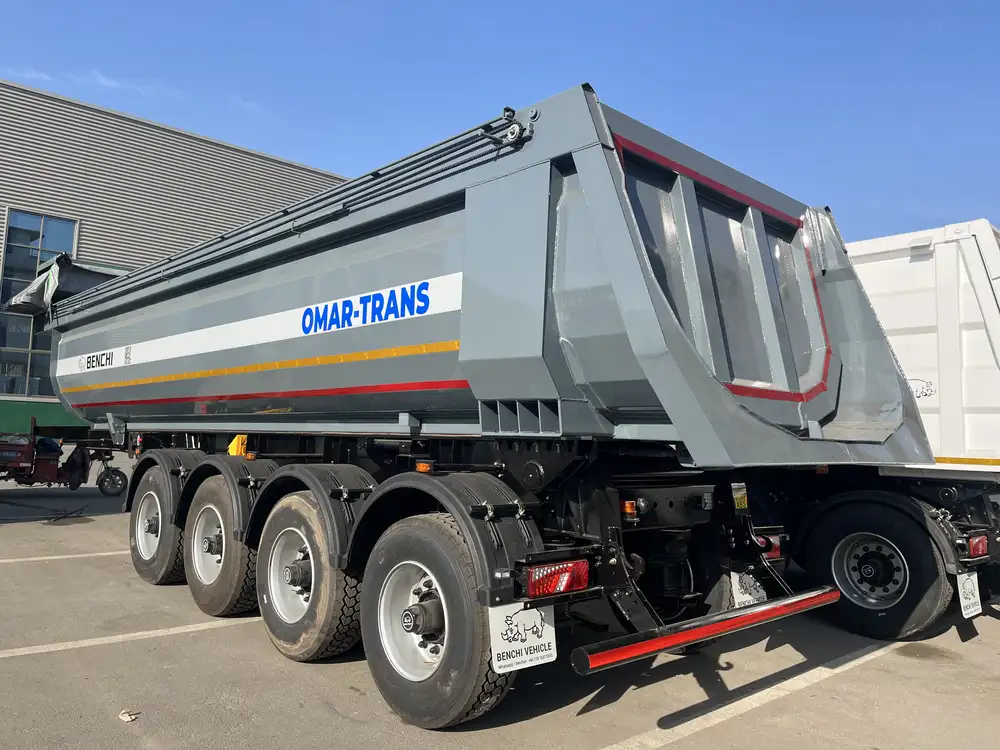Understanding the 40 Ft Skeletal Trailer
A 40 ft skeletal trailer is a specialized semi-trailer designed primarily for transporting containers and heavy loads. Its skeleton-like structure comprises a robust frame that minimizes weight while maximizing strength and durability. This makes it an essential tool for logistics companies, freight forwarders, and shipping lines, especially in an increasingly globalized trade environment. Skeletal trailers are particularly effective for intermodal transport, allowing seamless transfer between ships, trains, and trucks.
Key Features of 40 Ft Skeletal Trailers
| Feature | Description |
|---|---|
| Length | 40 feet, optimized for container transport |
| Construction Material | High-strength steel for superior durability and lower maintenance needs |
| Weight | Lightweight design enhances payload capacity without compromising strength |
| Wheelbase | Stability during transportation, crucial for heavy loads |
| Customizable Options | Available with features like extendable axles and various loading configurations |

Advantages of 40 Ft Skeletal Trailers
Optimized for Efficiency
The design of a 40 ft skeletal trailer minimizes dead weight, allowing for a maximum payload. This efficiency is especially crucial in reducing operational costs, as logistics managers need to maximize profits on every journey.Versatility in Loading Options
These trailers can accommodate standard ISO containers, which are prevalent in global shipping. Moreover, they can be modified or fitted with additional equipment to transport machinery or bulk goods if necessary.Enhanced Durability
Constructed from high-strength steel, these trailers endure the rigors of heavy transportation. The robust frame can withstand harsh weather, heavy loads, and rough handling, ensuring a long service life.Ease of Maintenance
The minimalist design not only reduces the number of components that might require maintenance but also simplifies access to vital parts. This feature is critical for companies that prioritize downtime minimization in their operations.Improved Aerodynamics
Many modern skeletal trailers incorporate aerodynamic features that reduce drag, leading to improved fuel efficiency. This enhancement is increasingly important in today’s eco-conscious transportation sector.
The Applications of 40 Ft Skeletal Trailers
Intermodal Transport
The primary application of a 40 ft skeletal trailer lies in its ability to facilitate intermodal transport. By utilizing the same container across different transportation modes—ships, trains, and trucks—it drastically reduces handling times and the risk of damage. Major shipping lines and rail freight services have embraced this system for its efficiency and cost-effectiveness.

Heavy Hauling
These trailers are also ideal for hauling construction materials and heavy machinery. Their sturdy design sufficiently caters to the dauntless structure required for moving these substantial loads, making them commonplace on construction sites.
Custom Transport Solutions
In some cases, businesses require specialized transport solutions, whether for oversized loads, warping conditions, or specific accessories. Manufacturers of 40 ft skeletal trailers often provide customization options, ensuring that customer needs are fully addressed. This adaptability is a significant advantage for businesses engaging in niche markets.
Optimize Your Fleet with the Best Practices for Using 40 Ft Skeletal Trailers

1. Regular Maintenance Checks
Establishing a routine maintenance schedule is critical. Regular checks on brakes, tires, and frames can help identify issues before they escalate into disastrous failures. Furthermore, keeping these trailers in optimal condition can enhance their longevity, providing a better return on investment.
2. Train Operators Thoroughly
Investing in operator training ensures greater safety while handling these trailers. Understanding the nuances of maneuvering and loading will lead to reduced accidents and more efficient use of the equipment.
3. Invest in Quality Components
Using high-quality components may result in slightly higher initial costs, but this investment pays off in the long run through fewer breakdowns and lower maintenance needs.

4. Implement Load Management Solutions
Properly managing loads is essential for maintaining the safety and efficiency of operations. Overloading trailers can cause undue stress on the structure, potentially leading to catastrophic failures.
Comparison with Other Trailer Types
| Trailer Type | Payload Capacity | Ideal Use Cases | Advantages |
|---|---|---|---|
| 40 Ft Skeletal Trailer | High | Intermodal, heavy hauling | Lightweight, durable, customizable |
| Flatbed Trailer | Medium | General transport, oversized loads | Versatility in loading, easy access for cargo |
| Reefer Trailer | Medium to High | Temperature-sensitive cargo | Temperature control for perishable goods |
| Curtain Side Trailer | Medium | Quick loading and unloading | Flexibility for cargo loading from sides |
The table above highlights the essential differences between various trailer types. While each has its own unique strengths, the 40 ft skeletal trailer stands out for shipping containers and heavy loads due to its design efficiency and durability.
Cost Analysis: Investing in a 40 Ft Skeletal Trailer
Understanding the financial implications of acquiring a 40 ft skeletal trailer is crucial for manufacturers, logistics companies, and independent operators alike. Here’s a brief breakdown of what to consider:
- Initial Purchase Cost: Pricing varies based on manufacturer, features, and customizations. Expect a broad range, but ultimately a higher-quality trailer pays dividends through durability and efficiency.
- Operational Expenses: Fuel efficiency can significantly impact operational costs. As mentioned earlier, these trailers often incorporate features to improve aerodynamics, leading to fuel savings.
- Maintenance Costs: Factor in routine maintenance, which may include tire replacements, brake servicing, and structural inspections.

Estimated Long-Term Cost of Ownership
| Cost Factor | Estimate (Over 5 Years) |
|---|---|
| Purchase Price | $20,000 – $50,000 (dependent on specifications) |
| Fuel Expenses | $15,000 – $30,000 (varies based on mileage and fuel prices) |
| Maintenance | $5,000 – $15,000 |
| Insurance | $2,000 – $5,000 |
| Total Estimated Cost | $42,000 – $100,000 |
This thorough breakdown allows potential buyers to visualize the financial commitment required when integrating a 40 ft skeletal trailer into their fleet.
Tips for Choosing the Right 40 Ft Skeletal Trailer
When selecting a suitable skeletal trailer, consider the following elements:
- Purpose of Use: Will the trailer be used primarily for intermodal transport or heavy hauling?
- Required Features: Do you need customization options, such as extendable axles?
- Weight Capacity: Ensure that the trailer can support the expected loads without exceeding weight limits.
- Manufacturer Reputation: Opt for reputable manufacturers known for quality and after-sales support.
Future Trends in Skeletal Trailer Design
- Sustainability Initiatives: A growing emphasis on eco-friendly practices will lead manufacturers to invest in sustainable materials and designs for 40 ft skeletal trailers.
- Smart Technologies: Integrating GPS tracking, weight monitoring, and condition assessment technologies in future designs will enhance operational efficiency and safety.
- Customization Demand: As industries evolve, the need for highly specialized trailers will drive demand for customizable options.

Conclusion
The 40 ft skeletal trailer represents a smart investment for logistics providers, manufacturers, and transport companies. Its robust design, efficiency, and adaptability to diverse transport needs make it a critical tool in modern transportation and logistics. By choosing the right trailer, optimizing maintenance practices, and anticipating future trends, businesses can not only meet customer demands today but also position themselves for a successful tomorrow.



